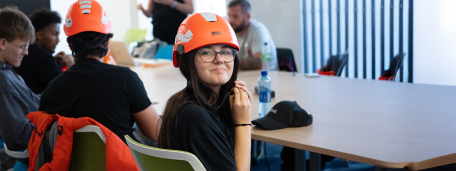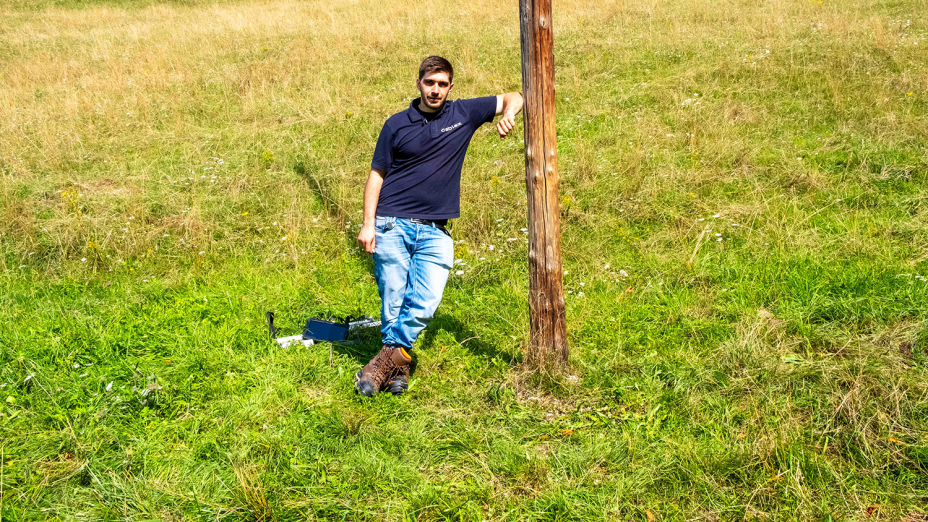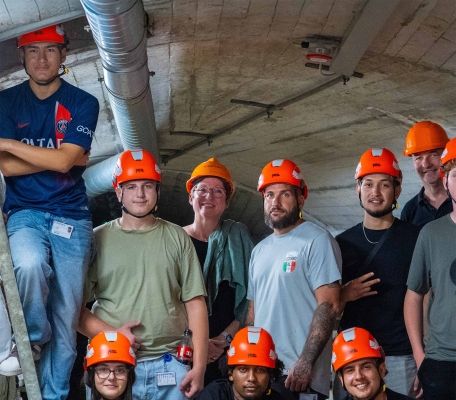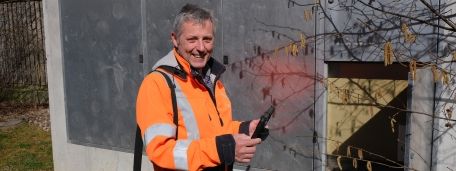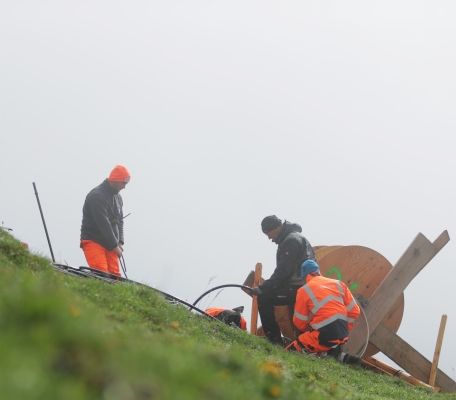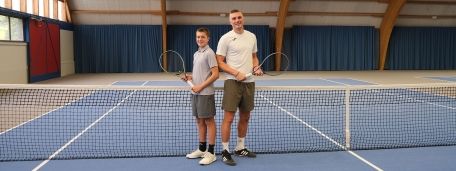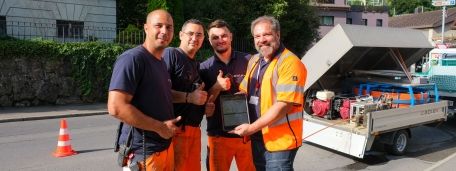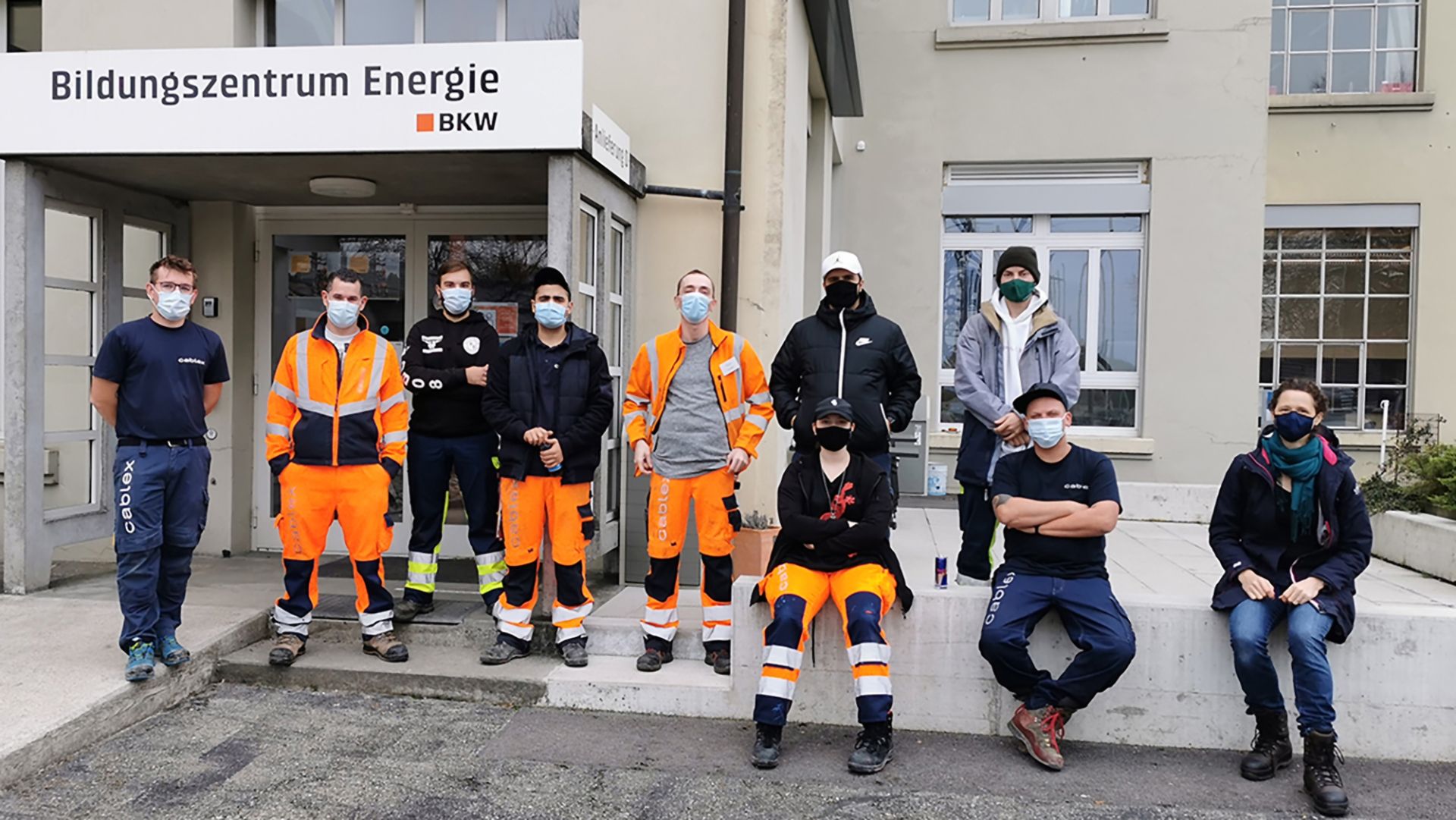
Impressions of the ÜK TEL 3:
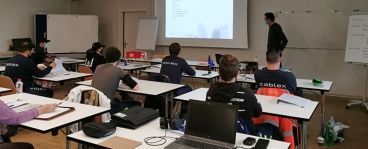
Teaching theoretical contents is an integral part of the ICC before the practical implementation begins.
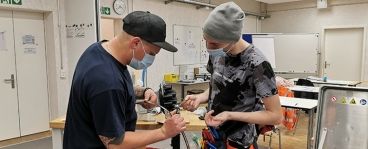
The instructor shows how to mark the corresponding tubes with snap-on markers.
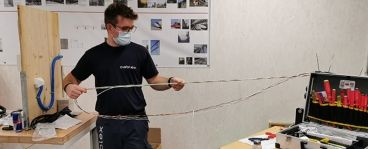
The loop is prepared for later insertion into the sleeve.
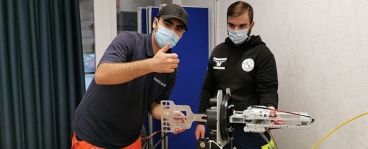
Teamwork during the insertion of the loop cable into the sleeve. On the right, you can see the sleeve’s centre crosspiece for fibre management, and on the left is the fixing bracket.
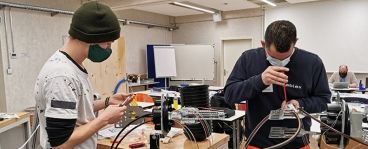
The strain relief is mounted here and the gel sealing set is installed on the oval support of the sleeve.
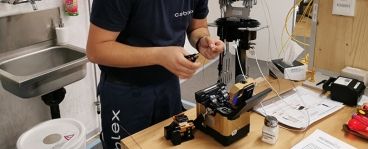
The splicing devices, in this case LWL, are used by network electricians for almost every job. The fibres must be unsoiled, and are therefore cleaned with isopropyl alcohol.
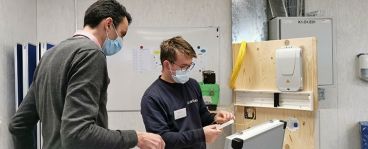
The installation of an OTO box is prepared.
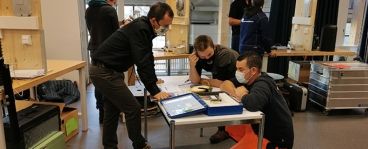
In this exercise, the trainees receive information on OTDR measurement. In this measurement, the reflected light (backscatter) is measured along the cable section.
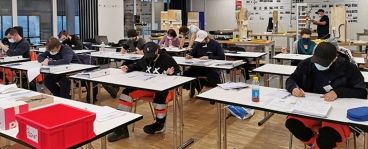
Every day at ICC concludes with a knowledge test. During this time, the trainees’ practical work is monitored and assessed by the operational course leader.
Theoretical foundations.
With the subject ‘basics of optical fibre foundation’, the study areas of the third and final inter-company course built directly on the contents of the second ICC. The joint professional training and performance objective was the laying, installation and maintenance of communication and data cable systems comprised of optical fibres. As there can be no mistakes when trainees finally hit the construction site, the inter-company courses focus on practical activities, which have to be carried out very carefully according to the instructions.
Practical work in the TEL 3.
Unfortunately, due to the Covid protection measures, all course participants had to wear a mask for the entire four days of training. Each trainee had their own workshop space and could carry out all practical work without restrictions.
These included preparing the cables with optimised bending properties according to the installation instructions and correctly arranging them in the cassettes and fibre trays. Next, they spliced the fibres and mounted the plastic sleeve. The course focused on gel sealing for cable entry into the FIST splice sleeve. In the second inter-company course, the cable entry was sealed at the sleeve using shrink tubing. During the splicing work, for example, training was carried out on permanent fusion splice connections in a building entry point (BEP). In a BEP, each dwelling is assigned a separate splice cassette.
Subsequently, training was carried out on the connection of the terminal stations (OTO), distributors (BEP) or main distributors (OMDF). To this end, the main and distribution cabinets as well as terminal units (OTO) are installed at the designated locations and the cables are spliced into these elements. The final implementation consists of completing the simulated FTTH installation with connectors in the dwelling. This is done in the OTO (optical telecommunication outlet). Surface-mounted and flush-mounted variants are used.
Important quality checks.
Once the installation work is completed, it is imperative that various checks are carried out. This includes the red light control. Visible light is used to check whether an installed optical fibre cable is continuous between two defined points. A damping measurement is then carried out. Attenuation is expressed in decibels (dB) and measures the performance of the components in an optical fibre network. The third measured value is determined with an optical time domain reflectometer (OTDR). This backscatter measurement enables a spatially resolved representation of the events along the LWL cable route.
We wish all prospective grid electricians success in the rest of their training and hope that they ace the qualification process in 2021.
You can find out more about the industry-wide trainings (ÜK) in the following reports (some are only available in German):
- Report 1/4: Fit für die Zukunft – unsere Netzelektrikerlernenden im ÜK.
- Report 2/4: Voller Einsatz unserer Lernenden – auch bei eisiger Kälte.
- Report 3/4: Into the world of network electricians.
- Report 4/4: A look behind the scenes: network electricians.


